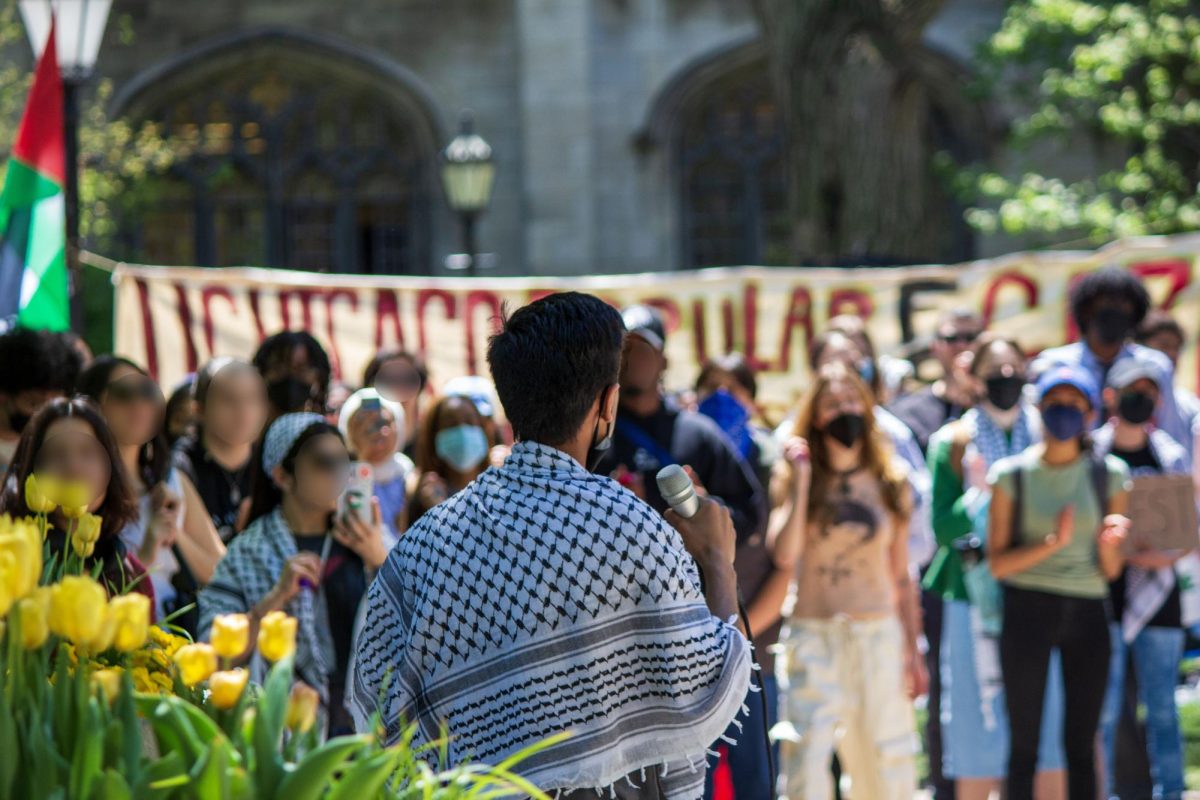In Chicago, people seem to pay most attention to buildings either well before they are built, or right before they are torn down. Before construction on the new dorms had begun, the eventuality brought out reactionary opinions from lovers of Oxford imitation. Now, with construction underway, the noise and nuisance force us to pay further attention to this supposed monstrosity. Once this building is finally completed, reactions by users and even the campus curmudgeons will likely be muted by comparison. This change is an example of how our views about buildings are influenced by when we get to know them — before, after, or during construction.
Architects typically try to integrate a building’s parts so that the building achieves singularity in our mind’s eye. In addition to creating buildings that stand out on their own, architects are adding to streetscapes and neighborhoods that are sometimes conceived of as one. What should be the “atom” of architectural perception? In other words, how much should buildings blend and how much should stand out? This is a difficult conflict to resolve in part because the way people perceive buildings is fundamentally altered by when and how they experience them. Our perceptions of spatial context are shaped by temporal context.
Classes several years from now likely will perceive the new dorms flush with the new cafeteria in Bartlett, and playing off the frat house dowager townhouses across the street. But those who knew the green field before it might still find the dorm too conspicuous.
However, witnessing construction could shape our views for the better, not worse. Those who find the new dorm disagreeable might better appreciate the building as they observe the construction process. Witnessing construction offers an opportunity to see an architect’s trick of “singularity” revealed in many parts. Construction potentially reveals a lot about an architect’s intention. At different stages of completion, we can see these parts in isolation. During construction, we can see how different parts of a building affect the whole.
Now that we have seen its mundane innards, Legorreta’s building might seem more interesting when completed. The situation is comparable to hearing several voices of a good fugue separately before hearing the work itself. The whole will seem that much greater than the sum of its comparatively ordinary parts.
What can we learn about Palevsky now that its pieces impede our path? This building is more revealing and open than previous buildings. Rather than attempt to achieve a complete singularity in building like many architects, Legorreta seems to deliberately let aspects of the building stand apart.
The flashy colors will accentuate the separate aspects of the building — green on the roof, and purple on the atria window partitioning. I would argue that these unusual colors appear consistent with the architect’s apparent intention to bring into relief both roof and atria and call attention to their separateness. The double-decked two-story atria bursting out of the corners of the building are another example of how Legorreta deliberately separates building elements.
When the atria are painted, these striking elements will likely visually overtake the functional parts of the dorm. Future students will probably see these first, while we see the long dorm room facades that were built first. For future students, the long facades might appear in the background, as these open atria are in the foreground. Our experience of construction should allow us greater insight into what may be one of the architect’s intentions. We will be able to see how the radical colors bring out the atria and the glass hallways in the centers, as we have seen their unadorned concrete before it.
By no stretch of the imagination does this building “interpret the Gothic.” The Gothic was originally about constructing a building to reflect nature — what Wright admired so much, that a building was natural.
With Palevsky, Legoretta seems to want to express that a building is simply made of a series of parts. The line between function and flourish is clearly delineated, as with the roof that ends halfway. And the end of the long line of dorm rooms that — in a building more open than any on campus — ends with just a brick wall.
I am willing to bet the dorm will be enjoyed by its future users for the same reasons it is abhorred by some of today’s campus reactionaries. The bright colors offer relief from the ‘gray city’ during the four months of winter. With its big windows and atria, this is the anti-Pierce. Even the closed-in courtyards appear open. The roofs achieve a balance between a feeling of enclosed, clustered quadrangles, and open invitation. Turned towards each other, they create a sense that there is enclosed space. But in one of Legorreta’s tricks, each long slab of dorm rooms appears “pushed out” to allow “open” corners. At these corners, the angle of one roof ending clashes with another beginning. Other corners are “cracked open” and revealed by glass-sheathed atria.
Commentators on the architectural debate argue about what is the appropriate architecture for an intellectual setting. I would argue that the most appropriate University of Chicago response to architecture, is — similar to politics or morality — to seek to understand the arguments and intentions of its creators before coming to an opinion about it, and even then, to avoid dogma.
The University can learn from Legorreta’s buildings as it expands into Woodlawn. Design choices are better off innovative than imitation Gothic (a la Press Building) in areas outside the main quadrangle in which there is no prevailing architectural style. To put it bluntly, Woodlawn affords even greater opportunities than Palevsky’s site for breaking campus architectural norms because its derelict condition means few will care if context is supposedly violated. Woodlawn affords a chance for wild design for the same reason the Southwest presents greater design opportunities than Chicago as a whole. What traditions remain people either do not care about or would rather see reinvigorated with something fresh.
Experiencing construction, however inconvenient, realizes the advantages of forward-looking choices.







